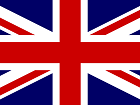Types of containers, mainly including: dry cargo containers (ordinary containers); Refrigerated containers; Open container; Frame container; Tank container. The most commonly used containers are 20 foot and 40 foot containers. The difference between 20 and 40 mainly refers to the length. 20 feet is about 6 meters long and 40 feet is about 12 meters long.
Dry container:
The most common function of containers is to transport goods in the general dry goods market. Of course, it can also be used for dangerous goods. Although there are various types of containers, generally speaking, dry cargo containers are what we call "standard containers".
Reefer container:
Refrigerated containers are temperature controlled containers. Like mobile refrigerators, most of them can adjust the temperature from - 30 ℃ to + 30 ℃. In the equatorial region, the temperature in ordinary containers can rise to 60-70 ℃. However, for refrigerated containers, the internal temperature can be kept constant. Therefore, it is usually used for food and dangerous goods that need temperature control.
Open top container:
An open container is like a dry cargo container without a ceiling. Since there is no ceiling, it is suitable for tall goods. Because it is a top opening, it is also convenient to put heavy goods into the container from the top. Loading loaded goods is not easy. Ordinary forklifts of 3 to 5 tons cannot load. But in the factory, it is not so difficult to load from the top of the container with an overhead crane or a wrecker. The open container seems to have no ceiling, and many people are worried that the goods will get wet in the rain. But in fact, after loading, the ceiling is covered, so there is no need to worry.
Flat rack container:
Frame container is a dry cargo container without ceiling and side wall. It is used to load goods wider than ordinary dry cargo containers. It is not only used for oversized goods, but also can be loaded into accessories that can adapt to containers and are not ultra-high. Even for goods not exceeding the height, frame containers are sometimes used when the loading facilities of the factory are insufficient. The sea freight of open container and frame container is generally higher because of the limited space on the container ship. For example, when using frame container to transport oversized goods, it needs more space on both sides and top. However, even if it is a special container, there are relatively few restrictions on sea transportation, so the sea freight has always been low.
ISO tank container:
Cans are used to hold liquid materials. It's cheaper to put the juice in containers and containers than to put the chemicals in cans and containers.
There are also several different sizes of containers.
20 foot container:
The 20 foot container is about 2.3 square meters and about 6 meters long. Container sizes vary slightly between shipping companies.
40 foot container:
The 40 foot container has the same width and height as the 20 foot container, i.e. 2.3 meters, but the 40 foot container is twice as long as the 20 foot container. About 12 meters.
40 foot high container (high container):
High containers are higher containers, mainly used for 40 foot containers. 20 foot containers are not common. In terms of size, a 40 foot cube is about 2.7 meters high.
To sum up, the width of the container is about 2.3 meters; The length of 20 foot container is 6 meters, and the length of 40 foot container is 12 meters; The height of the high cabinet is 2.7 meters. Open top containers have no ceiling. Frame containers have no ceiling or side walls.
The maximum loading weight of containers is also very important. When transporting not very large but heavy goods, such as steel, machinery, liquid, water, rice, etc. In terms of shipping, the weight of goods is very important for safety control.
Therefore, for 20 foot and 40 foot containers, the weight of the maximum cargo load is about 25 tons. A 40 foot container does not mean that it can carry twice the weight of a 20 foot container. Containers are also graded, and the quality of containers will change according to the type of goods. Used containers are cleaned and repaired in the container warehouse. They are divided into classes a, B and C. For example, if it transports sanitary products such as food or medicine, the container must be Grade A. Class a containers are in good condition without large scratches, peeling floor and peculiar smell; Besides, class C container, if there is a hole in the ceiling of the container, it is unacceptable, but it can be used for the transportation of waste and steel.
Shipping containers


 English
English Spanish
Spanish Arabic
Arabic